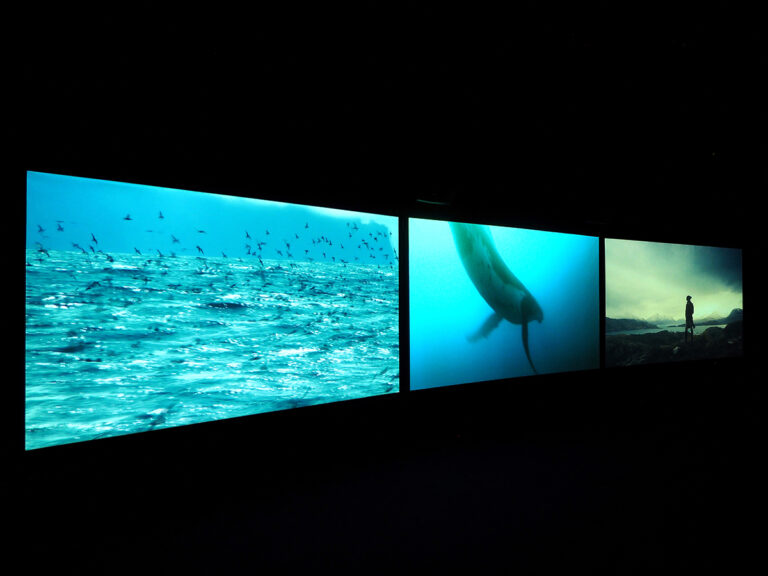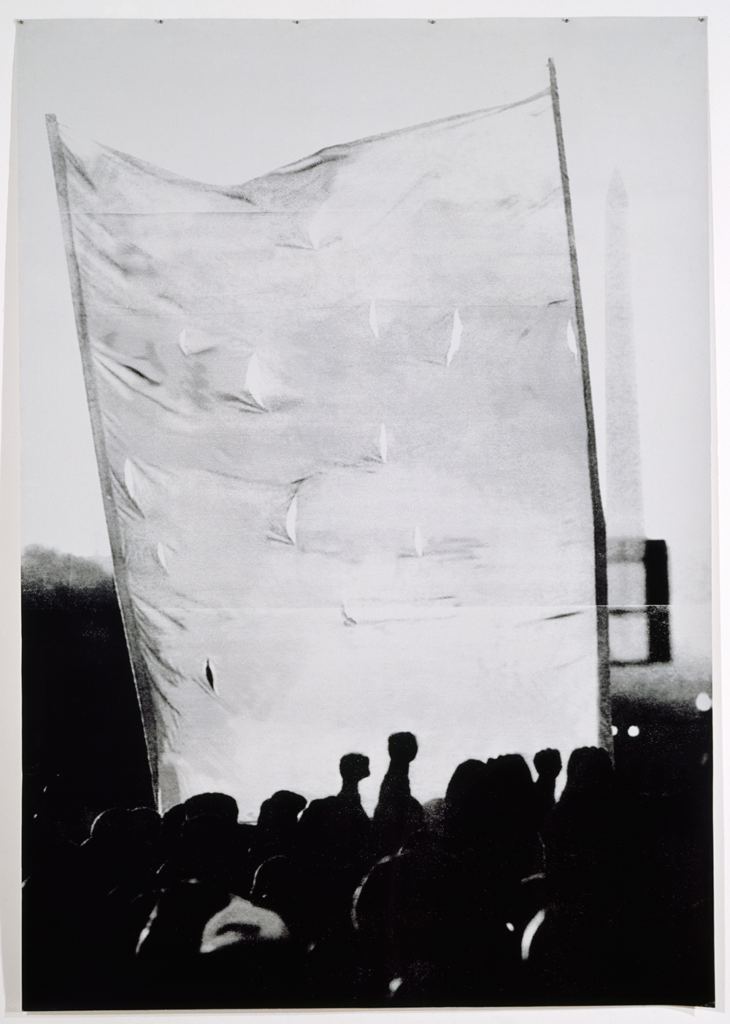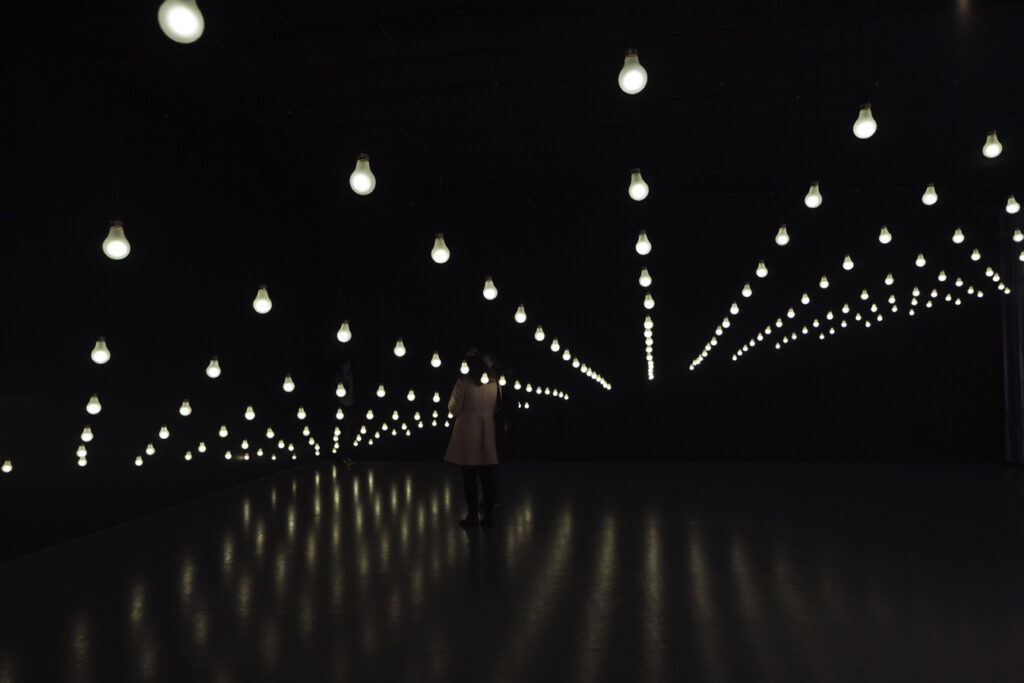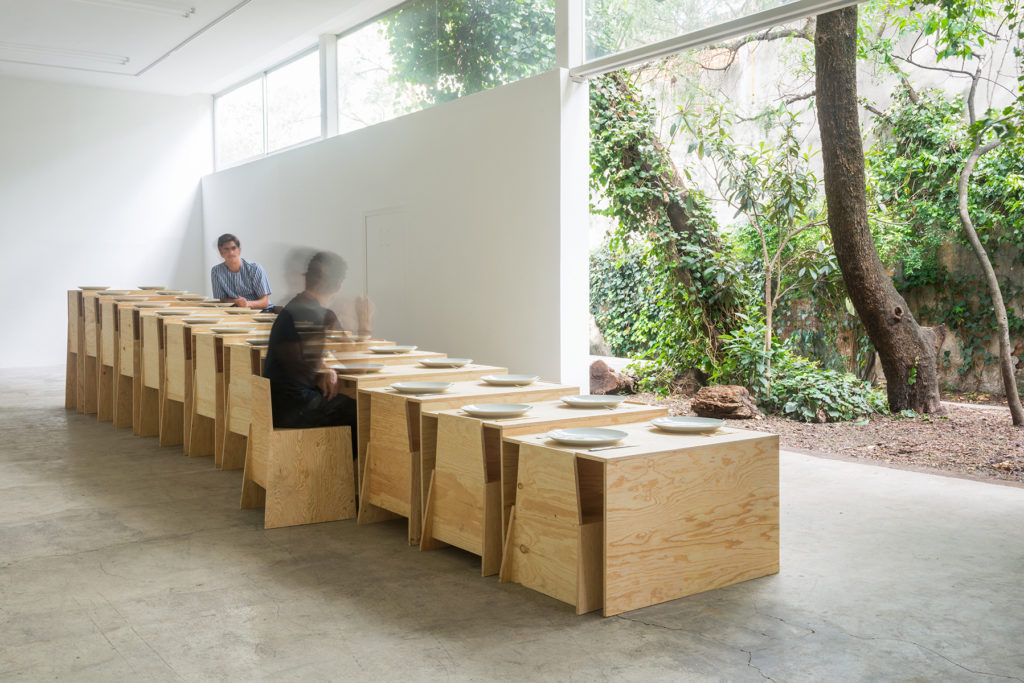
John Akomfrah, Vertigo Sea, 2015; three channel HD color video installation, 7.1 sound 48 minutes 30 seconds; © Smoking Dogs Films; courtesy Lisson Gallery
SAN FRANCISCO, CA (December 13, 2017) — The San Francisco Museum of Modern Art (SFMOMA) announces four exhibitions of contemporary art, media arts and architecture and design, all opening in March 2018: Sublime Seas: John Akomfrah and J.M.W. Turner, the U.S. premiere of a cinematic video installation by John Akomfrah; Nothing Stable under Heaven, an exhibition of contemporary artworks from SFMOMA’s collection that reflects on our charged social and political climate; Jim Campbell’s hypnotic light installation Tilted Plane; and new architecture and design projects by the Mexico City–based duo LANZA Atelier.
Sublime Seas: John Akomfrah and J.M.W. Turner
March 3–September 16, 2018
Floor 7
This exhibition is the U.S. premiere of John Akomfrah’s Vertigo Sea (2015), a three-channel video installation comprised of poetic texts, natural history documentary and film essay. This cinematic work, which debuted in 2015 at the Venice Biennale, presents a voyage of discovery, an exploration of water and the unconscious, and poignant reflections on mortality. Vertigo Sea takes the viewer on an immersive aural and visual odyssey, encompassing the greed and cruelty of the whaling industry, the transatlantic slave trade and the current refugee crisis. Akomfrah’s intricately woven triptych positions this crisis in a longer historic perspective of race and migration.
Vertigo Sea will be paired with an unprecedented presentation of a grandly scaled oil painting by the English Romantic artist J.M.W. Turner, in SFMOMA’s media arts special exhibition gallery. Turner’s tumultuous painting The Deluge, first exhibited in 1805, was specifically selected by Akomfrah and will be on loan from Tate, London. The Deluge depicts the terror of the Biblical flood in a strongly emotional manner, evoking the idea of “sublime” art that is both disturbing and awe-inspiring.
Akomfrah’s Vertigo Sea, shot in the Faroe Islands, the island of Skye and the Northern regions of Norway, alludes to Ralph Waldo Emerson’s “sublime seas” through its painterly compositions and has as its narrative spine two remarkable books: Herman Melville’s Moby Dick (1851) and Heathcote Williams’ epic poem Whale Nation (1988), a harrowing and inspiring work which charts the history, intelligence and majesty of the largest mammal on earth. Excerpts of the texts are narrated and sensitively layered with a range of visual footage to create a dense portrait that exposes the greed, horror and terror associated with the whaling industry. Placed in the context of San Francisco, Vertigo Sea also creates a conversation with the city’s maritime history of the 19th- and 20th-centuries and its position as a port for migrants from the Pacific — signifying the start and end of epic journeys in the past and the present.
The title, Vertigo Sea, evokes a sense of dislocation that echoes through the narrative as it shifts from archival to new footage, slipping seamlessly between past and present, real and imagined, and depicting life above and below the waves as being simultaneous yet disconnected. The sea itself is positioned as a source of dichotomy: on the one hand, a rich source of life, movement and stunning visual beauty; on the other, a site for mass murder, political instability and unaccountability.
The HD-video installation with surround sound has a total running time of 48 minutes.
Support for Sublime Seas: John Akomfrah and J.M.W. Turner is provided by Meyer Sound.
About the Artist
Born in Accra, Ghana, John Akomfrah lives and works in London. A founding member of the influential Black Audio Film Collective in the 1980s alongside longtime collaborators David Lawson and Lina Gopaul, he is an artist and filmmaker whose works are characterized by investigations into personal and collective histories, memories and literary references. His works are often constructed from a combination of original footage and archival material, and driven by an urge to give voice to the experience of the African diaspora in Europe and the U.S.
Akomfrah is the winner of the 2017 Artes Mundi Award, the largest art prize in the U.K. and one of the most significant in the world. He has had numerous solo exhibitions including Barbican, London (2017); Whitworth Art Gallery, Manchester, U.K. (2017); University of New South Wales, Paddington, Australia (2016); STUK Kunstcentrum, Leuven, Belgium (2016); Arnolfini, Bristol, U.K. (2016); Bildmuseet Umeå, Sweden (2015); Eli and Edythe Broad Art Museum, Michigan (2014); Tate Britain, London (2013–14) and a weeklong series of screenings at The Museum of Modern Art, New York (2011). He recently produced the new film installation Precarity for New Orleans’ Prospect.4.
Related Programming
Saturday, April 28, 1 p.m., Phyllis Wattis Theater
SFMOMA will screen three of Akomfrah’s films — Handsworth Songs (1987), The Nine Muses (2011) and The Stuart Hall Project (2013). Free to the public. Visit sfmoma.org for details.

Glenn Ligon, We’re Black and Strong (I), 1996; collection SFMOMA, Accessions Committee Fund purchase © Glenn Ligon
Nothing Stable under Heaven
March 3–September 16, 2018
Floor 7
Nothing Stable under Heaven reflects on our contested past, turbulent present and unpredictable future, examining how individual and collective voices can be heard in an uncertain world. A collaboration across five curatorial departments — Architecture and Design, Education and Public Practice, Media Arts, Painting and Sculpture and Photography — this exhibition of contemporary artworks from SFMOMA’s collection explores the ways that artists inform our understanding of urgent social, ecological and civic issues, including security and surveillance, evolving modes of communication and political resistance.
Among the works presented are Hans Haacke’s News (1969/2008), a live newsfeed unspooling on rolls of printer paper; Trevor Paglen’s Autonomy Cube (2014), a sculpture with Wi-Fi access to a network that can anonymize data; and An Te Liu’s Cloud (2008), a system of 136 air purifiers, sterilizers, humidifiers, air cleaners and related machines running continuously. The exhibition features work in diverse media by 25 artists, including Andrea Bowers, Emily Jacir, Rinko Kawauchi and Glenn Ligon.
The exhibition title is drawn from James Baldwin’s 1962 essay “The Creative Process,” about the duty of artists to respond to social upheaval: “A society must assume that it is stable, but the artist must know, and he must let us know, that there is nothing stable under heaven.”
Major support for Nothing Stable under Heaven is provided by Helen and Charles Schwab.

Jim Campbell: Tilted Plane
March 3–September 16, 2018
Floor 7
This is the first SFMOMA presentation of Jim Campbell’s mesmerizing light installation Tilted Plane (2011), which explores the threshold of perception. The immersive work features a suspended grid of hundreds of incandescent bulbs whose filaments have been replaced by custom LEDs. Each light represents a “pixel” of information from an ultra-low-resolution moving image of birds in flight. Visitors are invited to step inside the room-sized artwork to experience the angled image plane from different perspectives and see how the flickering patterns of light may be discerned as shadowy forms in motion. The renowned San Francisco–based artist similarly translated two-dimensional imagery into three dimensions in the 2011–12 SFMOMA atrium commission Exploded Views. Campbell also is the creator of a major public art commission for the new Salesforce Tower in San Francisco, scheduled to go on view in 2018.
Major support for Jim Campbell: Tilted Plane is provided by Mary J. Elmore. Generous support is provided by Lionel F. Conacher and Joan T. Dea.

LANZA Atelier, Steps Table, 2017 (installation view, Labor Gallery, Mexico City); photo: Camila Cossio
New Work: LANZA Atelier
March 31–July 29, 2018
Floor 4
The latest installment of SFMOMA’s New Work series features the architecture and furniture design of LANZA Atelier. Based in Mexico City, LANZA is an architecture studio founded in 2015 by Isabel Abascal and Alessandro Arienzo, and this marks their first solo museum exhibition in the U.S. The centerpiece of the exhibition is Steps Table (2017), a 25-foot-long table comprised of 13 tiered sections paired with 26 chairs. Steps Table grows in height incrementally from one section to the next. Viewed from the lower end, the table seems to float gradually upwards, while from the upper end the structure appears to lower toward the ground.
Also on view is Without Number (2017), a recent proposal to repurpose existing security and surveillance structures into facilities that gather community instead of policing it. In addition, the exhibition includes Shared Structures (2017), a series of 16 graphic prints featuring iconic residential buildings in Mexico City constructed over the past century. The series represents a view of the growth of a major global city through its architecture, as it expands and densifies to accommodate a burgeoning population.
The New Work series is an integral part of SFMOMA’s commitment to highlighting work by living artists.
Generous support for New Work: LANZA Atelier is provided by Alka and Ravin Agrawal, SFMOMA’s Contemporaries, Adriane Iann and Christian Stolz, Robin Wright and Ian Reeves and Helen and Charles Schwab.